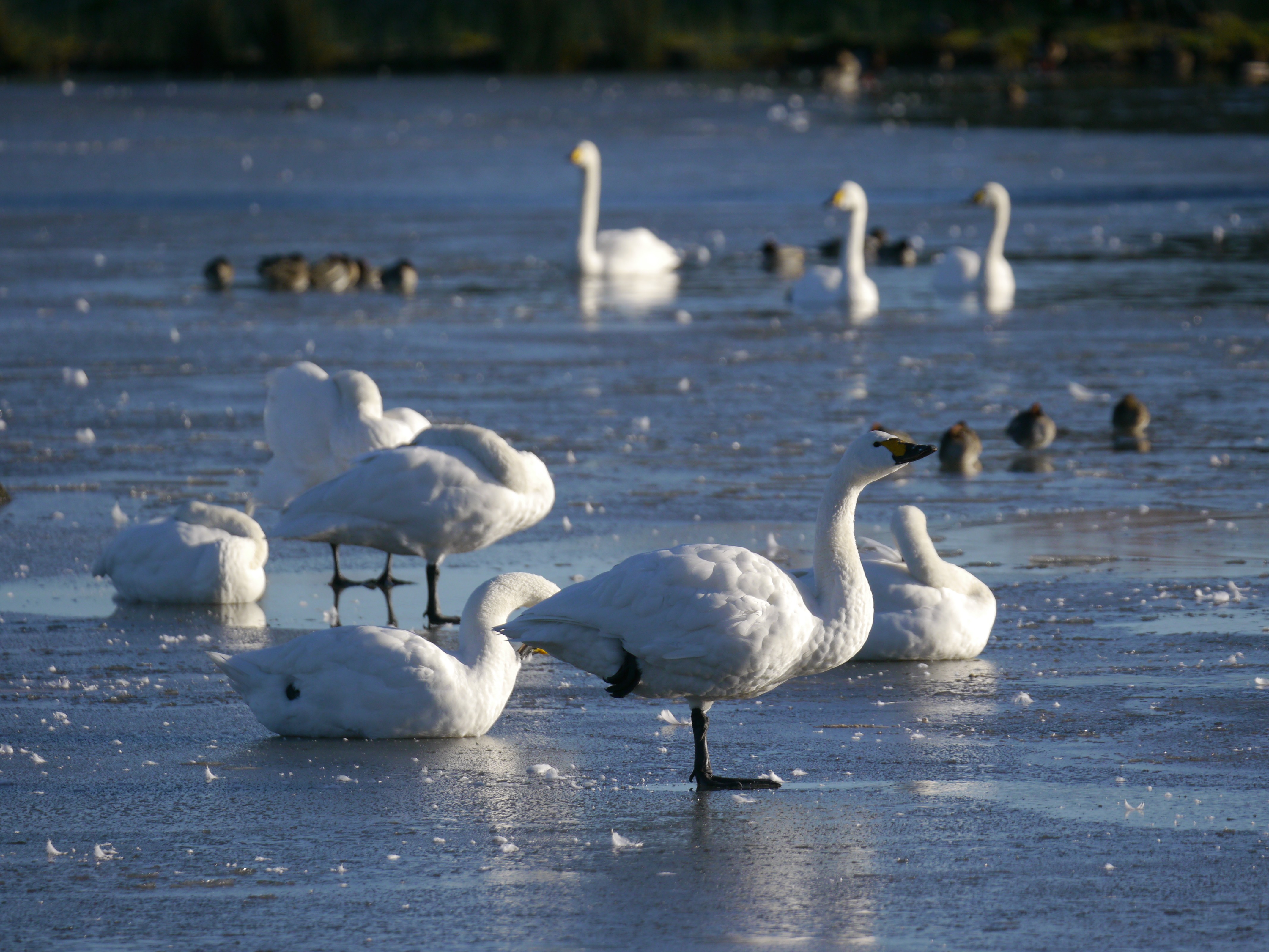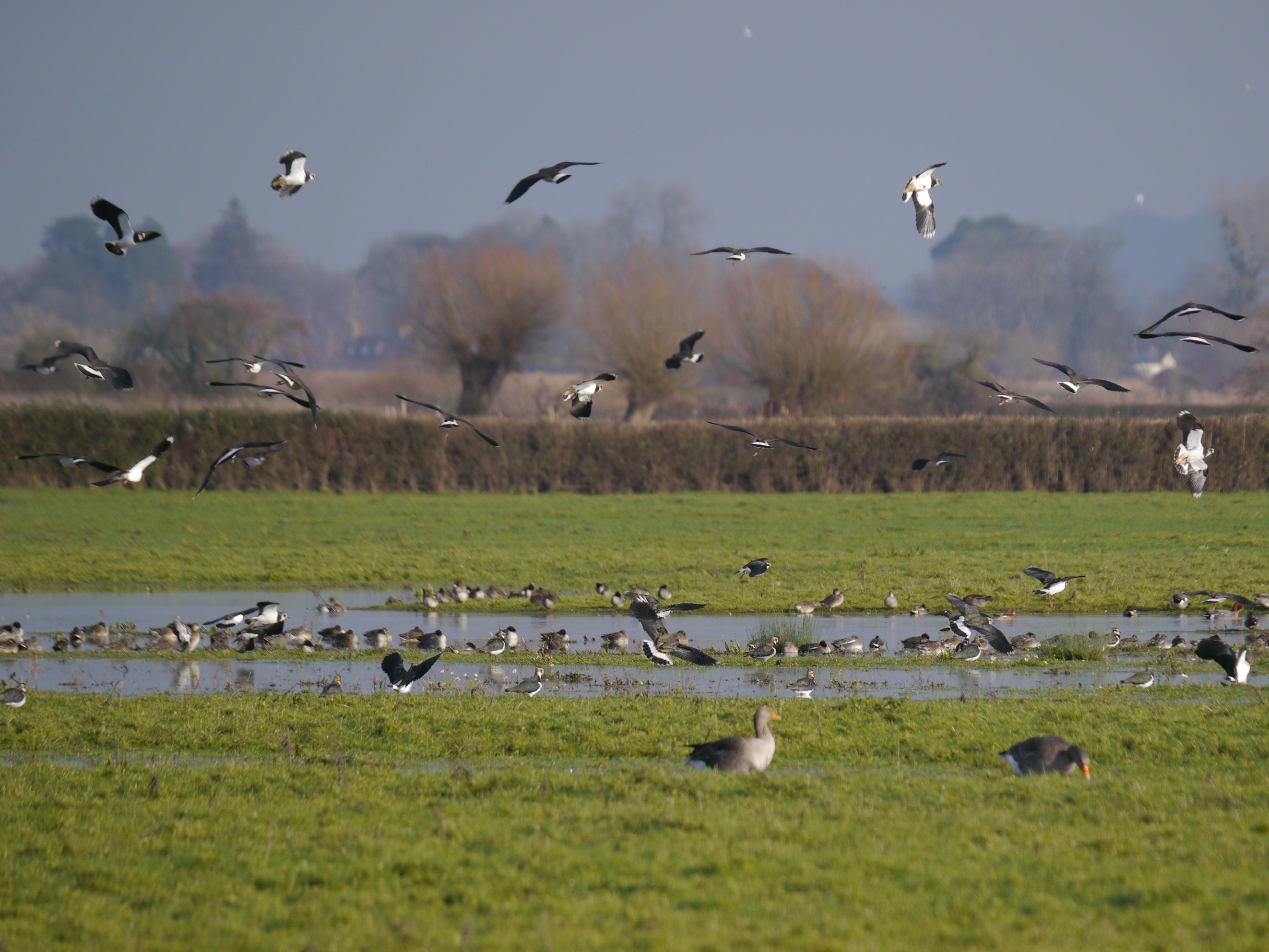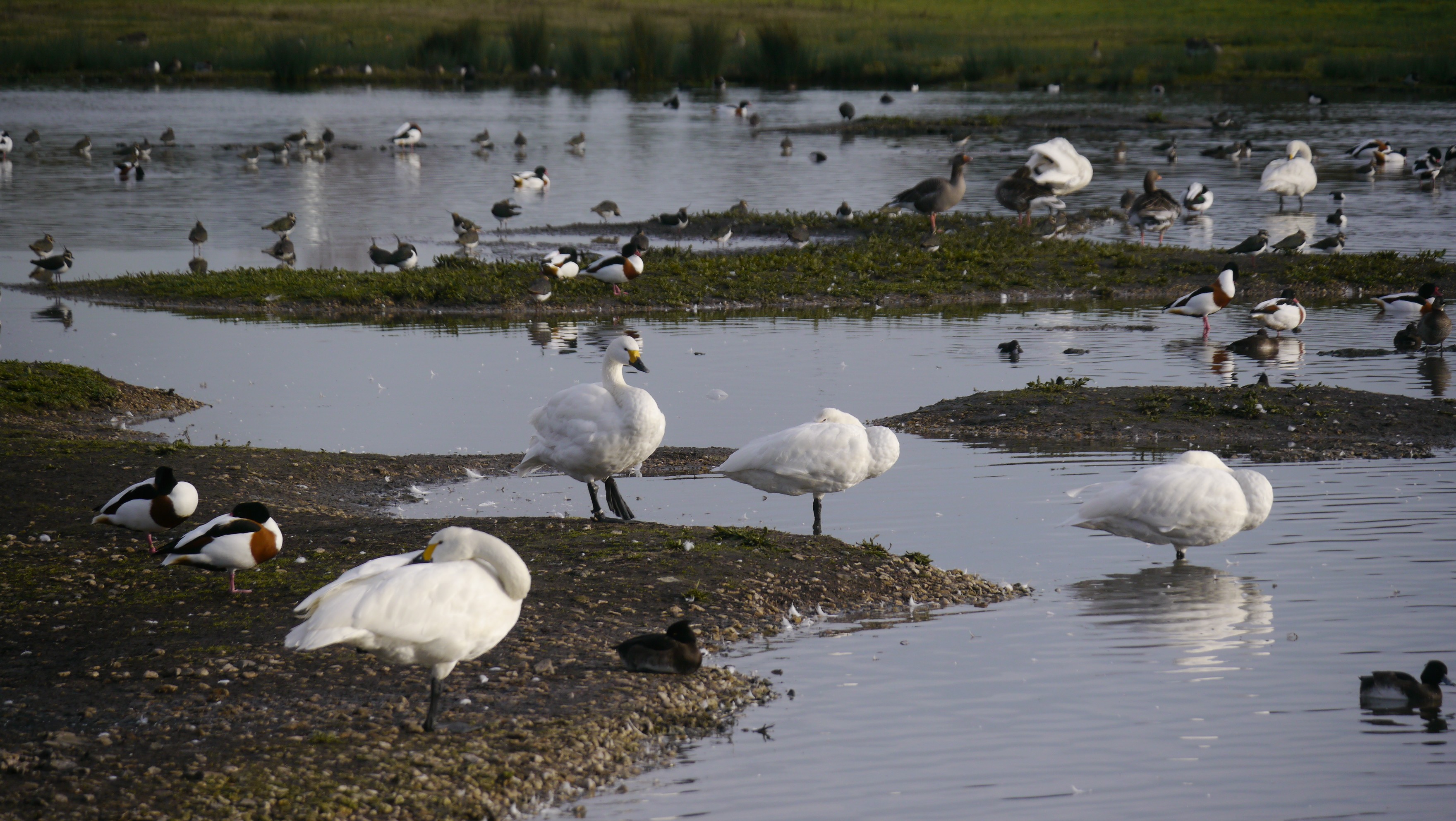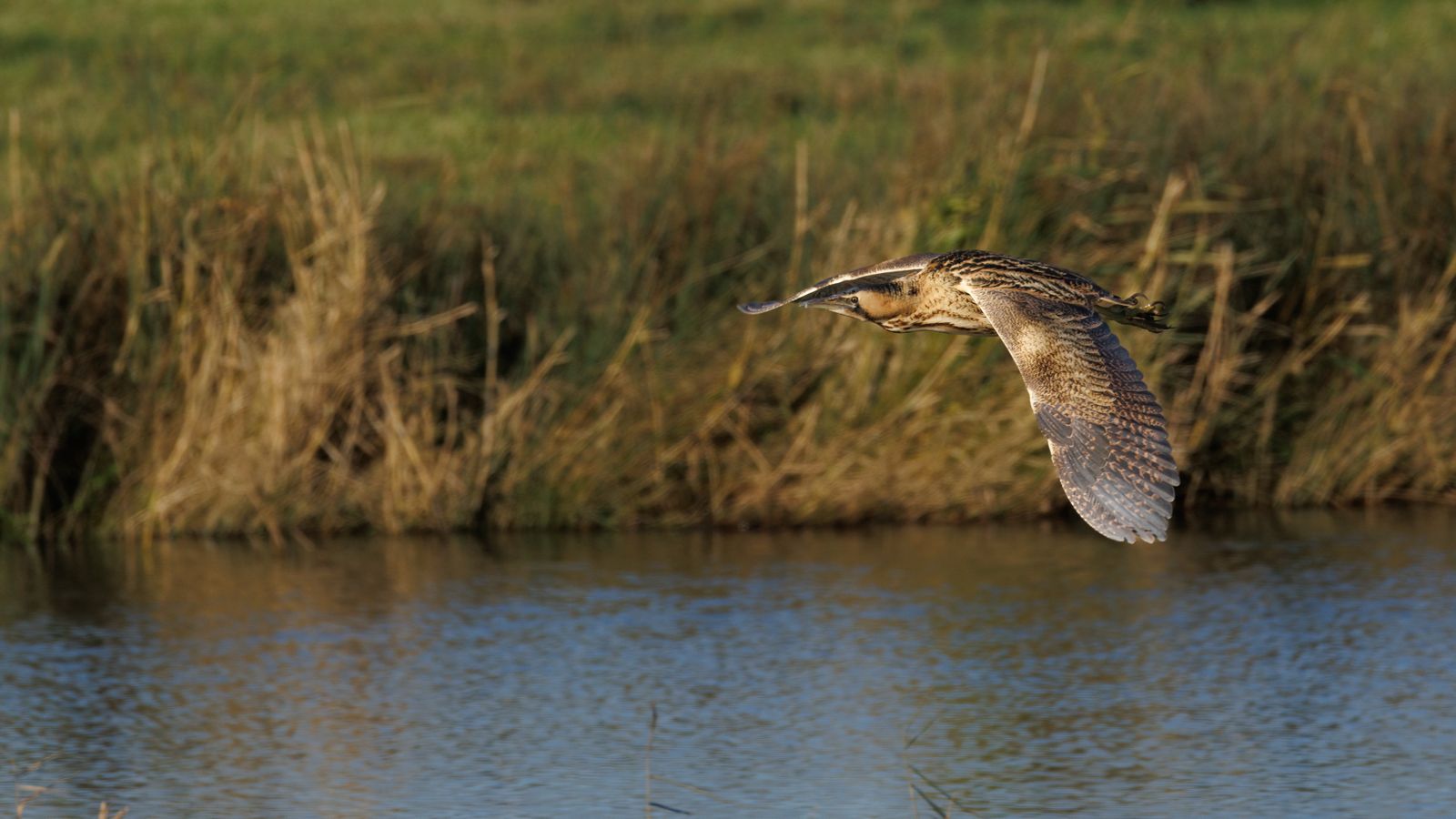Crane family updates
With two chicks now hatched from the nest on the South Lake, we now have eight Crane chicks across the reserve!

With two chicks now hatched from the nest on the South Lake, we now have eight Crane chicks across the reserve! There is a long way to go until the chicks fledge, so now all we can do is sit and watch the parents at work. Below is a short summary of our six breeding pairs this year...
Oakie & Sherbert
This pair still have their two chicks. They nested on the Top New Piece, viewed from the Zeiss Hide, but have recently moved their chicks over the seawall to The Dumbles. In the next few days the cattle will return to The Dumbles, and the Crane family are likely to return to the Top New Piece and Bottom New Piece to feed their growing family.
Ruby and unringed partner
Ruby sadly lost her previous partner, Bart, several years ago but has since repaired with an unringed bird. At the time of arrival, the bird could not have been a second generation bird from the Great Crane Project, so must be from a wild population in East Anglia or elsewhere in Europe. This year is their third breeding season together, but their first time successfully hatching young. The pair are our newest parents with two tiny chicks just a few days old, and can be seen well from the South Lake Discovery Hide.
Kia & Chocolo
This pair are breeding on the Rushy and have two fast growing chicks following them around the ponds, causeway and back meadow. The pair first bred in 2020 during the first national lockdown, but sadly lost their chick shortly after hatching. The pair didn't breed in 2021, so its great to see them with two good looking chicks this year.
Monty & Evie
Monty is now on his fifth partner in seven years, although he has been paired with Sedge twice in that time. Monty & Evie have now been together for a couple of years, but this is the first time we've known them to nest and lay eggs. The pair were the last to lay, so have a few weeks of incubation left. Look for them from the Estuary Tower on the left hand island on the scrape. We've now put up an electric fence to keep the cattle away, as they'll soon be returning to The Dumbles to graze for the summer.
Wendy & Albert
This pair are one of our longest established pairs, breeding in the north of the reserve. You may be lucky enough to see them with the single but very well grown chick on our Wild Safari events. This pair have one of the oldest chicks on the reserve, but it still isn't due to fledge until mid to late July! There is a long way to go, but we're keep everything crossed for all our families.
Phelps & Elizabeth Royal
Another pair in the north of the reserve, and one of our hardest to monitor as we don't want to disturb the area by making regular visits. The pair also have a very well grown chick, similar in age to Wendy & Albert in the next door field. We sometimes also see this family from our Wild Safari events.
Today also marks the start of Volunteers' Week and we want to say a BIG thank you to our incredible Reserve Team volunteers. Whether they're out on practical work helping manage the reserve's habitats and infrastructure, showing visitors our wildlife from our hides, leading events or helping with surveys, in the last year they've contributed over 12,500 hours to support our work! We couldn't do it without them and they're a really important part of our team. Thank you one and all!
Today's sightings include...
Zeiss Hide
Three Oystercatcher were on the Top New Piece this morning along with 49 Avocet, eight Lapwing, two Redshank, 14 Gadwall, ten Tufted Duck, two drake Shoveler, a drake Wigeon and a Little Egret.
Estuary Tower
As the tide rose, the three immature Spoonbill joined the gull roost. Also early to the roost were 22 Curlew, a pair of Oystercatcher, four Raven and a mixed flock of Dunlin and Sanderling. We have put up an electric fence around the scrape ahead of the cattle coming back out to graze The Dumbles for the summer month. The fence is protecting one of our Crane nests, along with five Avocet nests and a few Black-headed Gull nests on the neighbouring islands. On the scrape this morning were a newly hatched brood of four Avocet, which sadly reduced to three an hour or so later. Another family have a single chicks which is a few days old.
Further out on The Dumbles were a newly arrived pair of Cranes, Cookie & Pepe. This pair have presumably failed to breed this year and have now begun their autumn disperal, dropping in to the reserve for a few days before heading off to their wintering grounds. A male and female Cuckoo were working their way along the Summer Walkway hedge this morning, the male singing constantly whilst the female was presumably checking for nests in the hedgerow. They eventually moved off towards the Decoy.
Robbie Garnett Hide
Four adult Avocet including a pair with a single chick were on the Tack Piece this morning. Further out in the field were 33 Barnacle Geese.
Rushy Hide
A total of 47 drake Gadwall were on the upper pond, our Crane family were in the back meadow with their two chicks showing occasionally in shorter sections of vegetation. At least 12 Avocet were visible on the islands and a pair of Little Ringed Plover were noted along with a single Oystercatcher.
South Lake
Our two Crane chicks were with the unringed adult this morning and attempted to cross the scrape but aborted - its a long way in sticky mud for little legs. By this afternoon, the family had made the crossing and were on the shoreline near the Hogarth Hide. Also here this morning were 28 Avocet with a brood of three chicks, two pairs of Oystercatcher, one of which still have a single chick. A second-calendar year Mediterranean Gull was on the causeway amongst the Black-headed Gulls, and four Teal were in front of the Discovery Hide. A flock of 55 Black-tailed Godwit were roosting on the scrape until they were disturbed by a Stoat and then moved to the Top New Piece.



